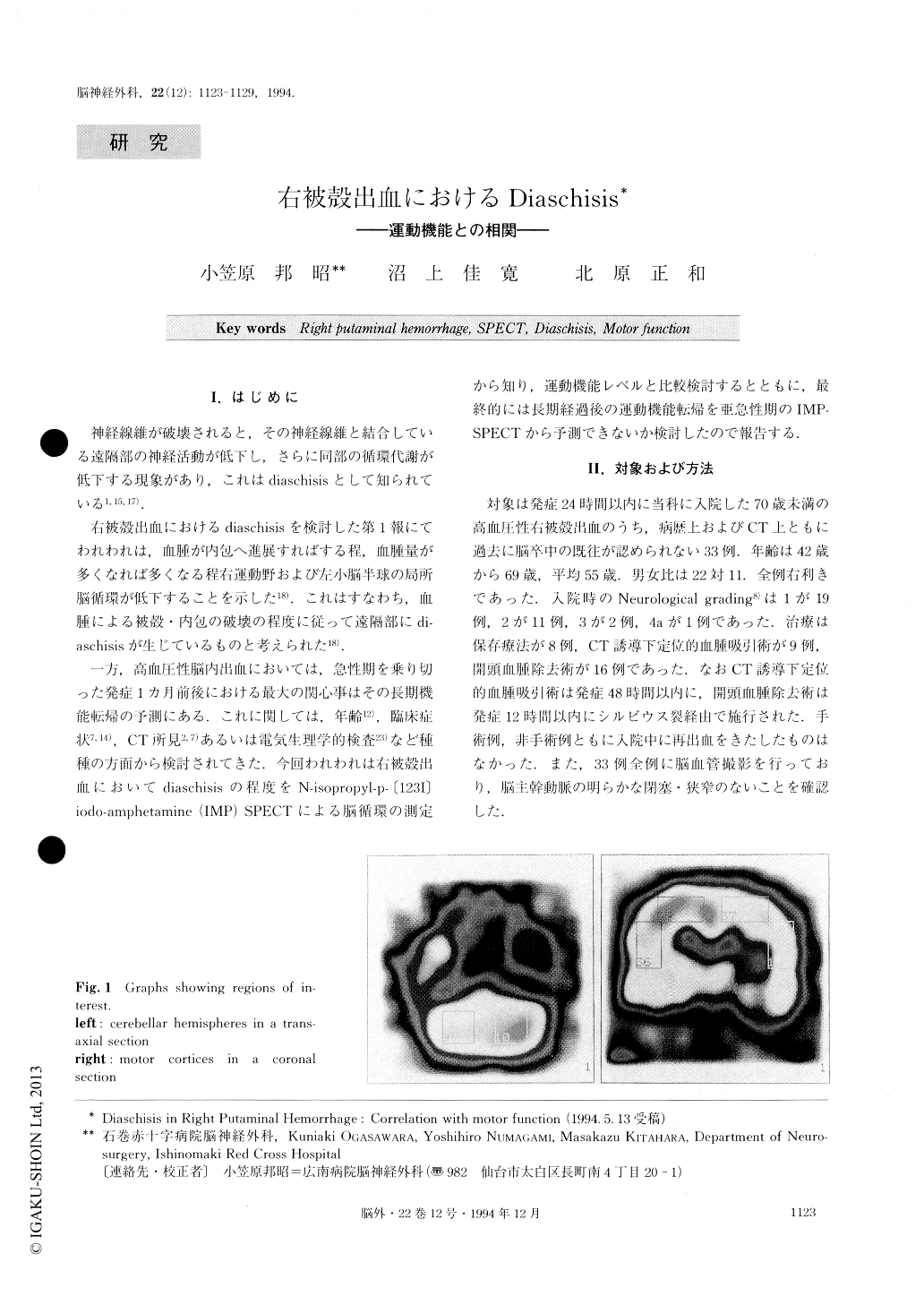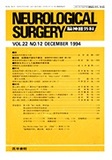Japanese
English
- 有料閲覧
- Abstract 文献概要
- 1ページ目 Look Inside
I.はじめに
神経線維が破壊されると,その神経線維と結合している遠隔部の神経活動が低下し,さらに同部の循環代謝が低下する現象があり,これはdiaschisisとして知られている1,15,17).
右被殻出血におけるdiaschisisを検討した第1報にてわれわれは,血腫が内包へ進展すればする程,血腫量が多くなれば多くなる程右運動野および左小脳半球の局所脳循環が低下することを示した18).これはすなわち,血腫による被殻・内包の破壊の程度に従って遠隔部にdi—aschisisが生じているものと考えられた18).
Local cerebral lesions may cause depression of func-tion in remote areas of the brain presumably by a transneural mechanism; it has been called “diaschisis”. In the present study, to investigate the relationship be-tween motor function and “diaschisis”, regional brain blood flow in hypertensive right putaminal hemorrhage was studied in 33 patients (mean age, 55 years; 22 men, 11 women). The hematoma was treated conserva-tively in 8 patients, aspirated stereotaxically in 9 pa-tients, and evacuated through a craniotomy in 16 pa-tients. The regional blood flow in the right motor cor-tex and the left cerebellar hemisphere was measured by a single photon emission CT with N-isopropyl-p-〔123 I〕iodo-amphetamine intravenous injection method, and was evaluated by the RI count on early image / the de-cay-corrected RI count on delayed image (E/D) value. The time during which regional brain blood flow was measured ranged from 29 to 35 days from the onset. There was a positive correlation between the grade in the motor function in the subacute stage and the re-gional blood flow in the right motor cortex and the leftcerebellar hemisphere. There was also a positive cor-relation between the Barthel index in the chronic stage (mean follow-up periods: 40 months) and the regional blood flow in the right motor cortex and the left cere-bellar hemisphere. The results of the present study sug-gest that in right putaminal hemorrhage the flow reduc-tion in areas remote from the primary lesion, i.e., “di-aschisis”, may reflect not only the degree of functional abnormalities of the internal capsule, but also the possi-bility of functional recovery.

Copyright © 1994, Igaku-Shoin Ltd. All rights reserved.


